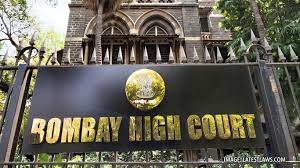K. Kannan, J.@mdashThe writ is brought for hearing in view of an order passed already to be posted after decision of CWP No. 3199 of 1988. The writ petition has been dismissed for non-prosecution and, therefore, said decision cannot have any bearing to the case and the same would require consideration on merits. This is a case where the petitioner was terminated from service on 30.6.1982 when he complained of breach of Section 25F of the Industrial Disputes Act, 1947 (for short ''the Act''), the Labour Court pointed out that he had only 211 days of service and, therefore, Section 25F of the Act was not applicable. The Labour Court also found that there was not even an issue of retrenchment for he had been merely a casual employee and terminated from service.
2. Learned counsel for the petitioner would point out that in so doing the Labour Court applied Section 2(oo) proviso of the Act that defines retrenchment and marks exceptions to hold that he could not be stated to be retrenched since he was appointed for a short period for a particular purpose and after the purpose was over he had, no right to continue in the job. Learned counsel appearing on behalf of the petitioner would further argue that the application u/s 2(oo) the Act was inappropriate since the amendment to section providing of sub-clause (b), an exception was brought by way of amendment on 18.8.1984 and was not available at the time when the termination took place on 30.6.1982. I must observe that the amendment to section 2(oo) of the Act was re-stating the law that existed and to quell the difference of approaches of various courts and a termination as a result of non-renewal of contract of employment cannot be assumed to be a case of retrenchment at all, unless there was any particular view of this court was prevalent at that time to allow for such a case as coming within the definition of retrenchment. The counsel would, therefore, contend that even it was not be treated as an application u/s 2(oo) of the Act, then there was some other junior employees who had been retained or when fresh appointment was given to new hands, the petitioner''s case must have been considered in the light of Section 25(H). Section 25(H) contemplates again only with reference to retrenchment of workmen. The basic question, therefore, would be still, whether termination that was made on 30.6.1982 was a case of retrenchment?. If it was held to be not so and there was no evidence available as to the nature of appointment that was made initially, then even the benefit of Section 25(H) of the Act cannot be applied. There was no order of appointment placed before the Labour Court to assess the entitlement to continue in service and to complain of termination as constituting retrenchment. I do not think the petitioner would have any valid ground to assail the order passed by the Labour Court. I, therefore, make no interference and dismiss the writ petition.

